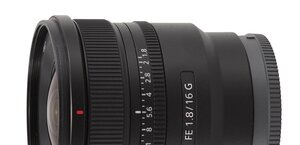Canon EF 40 mm f/2.8 STM
3. Build quality
As you can notice the Pentax is physically the smallest and the lightest here but it is also the only device produced for smaller sensors. The Canon is a bit bigger and heavier than the Nikkor but it weighs noticeably less than the Voigtlander. Still you should keep in mind that the Voigtlander is the fastest in this group and its casing is completely made of metal.
In the photo below the Canon EF 40 mm f/2.8 STM is positioned between the Canon EF 50 mm f/1.4 USM and a Sigma 30 mm f/1.4 EX DC HSM for smaller sensors.
Please Support UsIf you enjoy our reviews and articles, and you want us to continue our work please, support our website by donating through PayPal. The funds are going to be used for paying our editorial team, renting servers, and equipping our testing studio; only that way we will be able to continue providing you interesting content for free. |
- - - - - - - - - - - - - - - - - - - - - - - - - - - - - - - - - - - - - - - - - - - - - - - -
 |
The tested lens starts with a metal bayonet mount which surrounds contacts and a rear element, 18 mm in diameter. The rear element is mobile – it shifts with the whole optical system during focusing. When the lens is set at minimum focus the element hides inside the barrel, exposing a small slit through which you can see some electronics components.
 |
The proper casing features a big Canon inscription under which there is the focal length of the lens. On the left there is a focusing mechanism switch (AF/MF) and right next to it a red dot which makes attaching to a body easier. On the opposite site you can also find a „MACRO 0.3m/0.98ft” inscription, stating the minimum focusing distance you can take photos at.
 |
The next element is a narrow manual focus ring. It is the second EF class lens with an electronic transmission – after detaching the lens from the body the ring moves but without shifting the elements inside. In order to make it work you must attach the lens to a body, switch the camera on and set to the MF mode. It moves smoothly and running through the whole scale takes a turn through almost 180 degrees, ensuring you a great working precision. When you work in the manual mode you can hear the same electronic whirr as when the autofocus is switched on so the device s is never noiseless, condemning you to that delicate whirr constantly.
At the front of the lens you can find a filter thread, 52 mm in diameter and an inscription with the name and parameters of the lens. The thread surrounds a front element with a diameter of 18 mm.
When it comes to the optical construction we deal here with 6 elements positioned in four groups. The producer decided to use one aspherical element. Inside, there is also an aperture with seven diaphragm blades which can be closed down to the value of f/22.

Buyers get just two caps in the box.
 |






